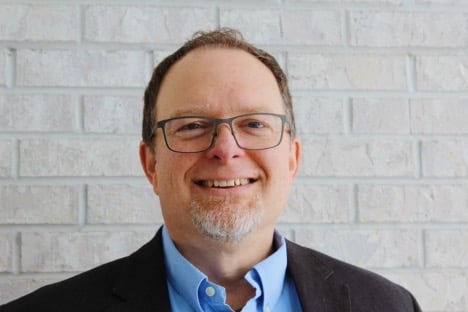How Leaders can Move Relationships from Distrust to Trust
- Dr. Jeff Doolittle

- Nov 16, 2020
- 3 min read
Updated: May 9, 2023

Evidence-based trends indicate that trust in leadership is declining. Two commonly underdeveloped leadership skills are the ability to have uncomfortable conversations and conversations that explore "what if" scenarios. Both of these skills are crucial to building trust. Leadership is accomplished through relationships, and distrust does not have to be considered the end of a relationship. The challenge of shifting a relationship from distrust to trust is the opportunity to make a difference.
Consider the following example. It is a high stakes meeting where the decisions being considered will determine the future of the company's survival. People are suggesting innovative ideas that are challenging other teams' structures and budgets. Some people begin getting angry at each other, rarely are the new ideas building on the others. Some of your peers in the meeting are retreating to silence amid the chaos. Everyone wants to help the business survive, and under the pressure of time, ideas are thought of and shared out loud. At that moment, you have and share an idea that could change the company's direction; however, one person in the meeting begins critiquing your concept. No one supports your opinion verbally, and you immediately feel a wave of emotion go over you. You begin to feel self-conscious and betrayed. Sound familiar? Unfortunately, this is not an uncommon situation.
Chemical Reactions to Trust and Distrust
In the above example, when we feel fear and distrust, cortisol, catecholamine, testosterone, and norepinephrine levels in our blood increase within 0.07 seconds. This chemical reaction triggers the wave of emotion, producing stress and fight or flight, limiting creative thinking, and increasing aggression. In different conversations, when we feel a sense of trust, oxytocin levels increase in our body, which leads to feelings of well-being. These different chemical reactions influence thoughts and feelings, which shape beliefs and ultimately drive behaviors and actions in conversations (see Figure 1).

How to Build and Restore Trust
If leadership conversations first take place at a chemical level, is it possible to shift our perspective? Is it possible to restore trust in relationships where there is distrust?
"Distrust is not the absence of trust" (Glaser, 2014).
Ironically, the most robust trust occurs when we can disagree and leave the conversation without negative feelings. A common theme in the research on building and restoring trust is to be transparent in your discussions. The goal is to create safety by being open and candid to demonstrate caring and respect. This intimacy requires being personal and the willingness to have an uncomfortable conversation. Next, focus on building a relationship with the other person. As a leader, this requires you to step back and discuss what works for others and you. Creating a shared idea of success is the goal. The "your way or the highway" leadership style does not work to build or restore trust in relationships. It is essential to understand both the context and perspectives of others and emphasize the other person. Lastly, do not judge too quickly. Learn to test assumptions and try to see the world as the other person does. The following acrostic, created by Glaser (2014), provides a helpful way to remember how to build and restore trust:
T – Transparency
R – Relationship
U – Understanding
S – Shared Success
T – Testing Assumptions
Research supports that we create stories about people as being adversaries or friends. When we repeatedly label someone as distrustful or an adversary, we will shift from not only experiencing pain from the relationship with that person, but we tend to seek out revenge.
Moving from distrust to trust provides many personal and organizational benefits, such as increasing information exchange, resulting in improved leadership effectiveness and efficiency. If you have questions on trust or getting started with individual and corporate development, we would like to help (contact us). Also, you might enjoy reading about Leadership Skills at Full Speed and Sodexo.
References:
Covey, S. R. (2006). The speed of trust: The one thing that changes everything. New York: Free Press.
Glaser, J. (2014). Conversational Intelligence: How great leaders build trust and get extraordinary results. New York: Bibliomotion, Inc.
Maister, D. H., Green, C. H., & Galford, R. M. (2000). The trusted advisor. New York: Free Press.
We know you are going to love these complementary leadership and professional development events!
Organizational Talent Consulting’s webinar content is developed to help leaders meet today's complex workforce and digital challenges. Our free live webinars deliver superior leadership development based on the latest research with no travel costs. Participants interact directly in question-and-answer discussions with subject matter experts and authors on crucial topics to enhance expertise. Webinars are recorded and shared with participants for convenient on-demand access after the live event. Topics include leadership, strategic planning, coaching, change management, and more (register and learn more).







Comments